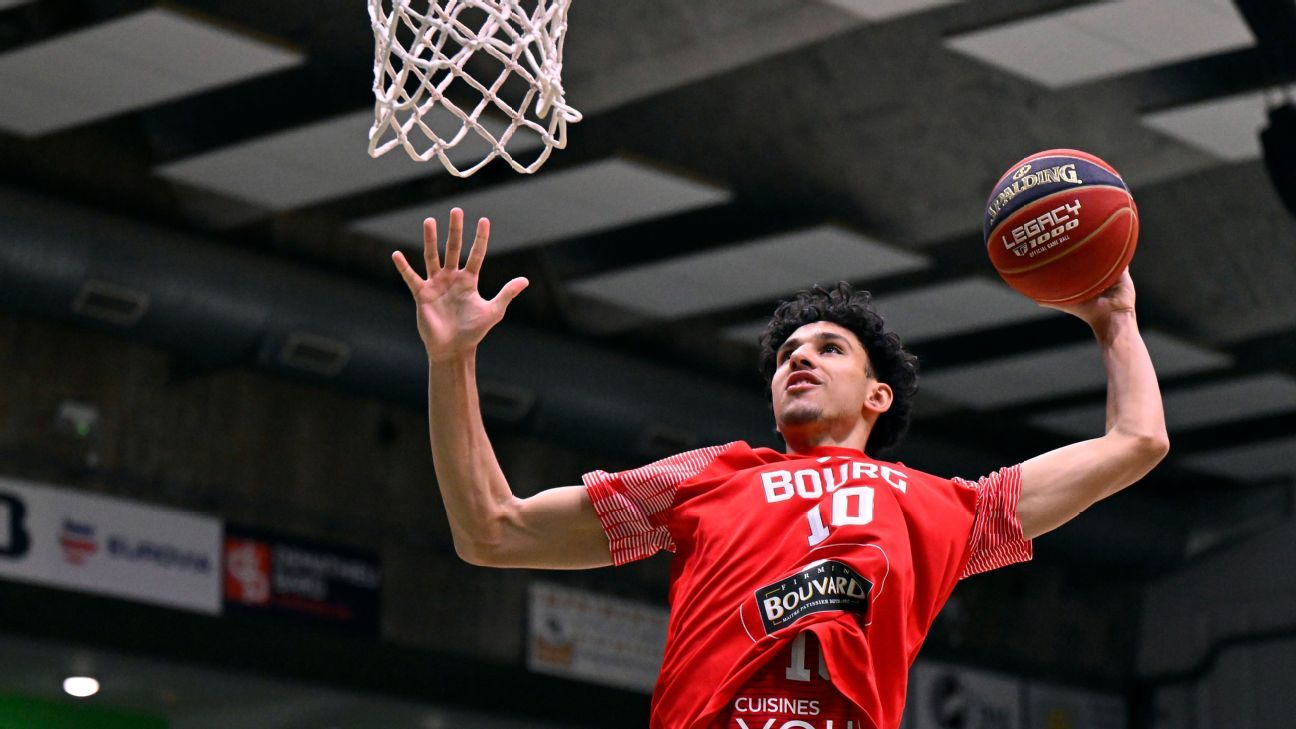Bobby Marksin Off-season Guide Jazzin osalta.
------
Utah Jazz
2023-24 record: 31-51
Draft picks in June: No. 8 (own), No. 28/29 (via OKC) and No. 32 (via WSH).
Note: The position of Utah's own first-round pick will be determined by the May 12 draft lottery. If it falls outside the top 10, it conveys to Oklahoma City.
Odds for the No. 1 pick: 6%
Free agents: Kira Lewis Jr. (R),
Talen Horton-Tucker,
Kris Dunn,
Luka Samanic,
Johnny Juzang (R) and
Micah Potter (R)
State of the roster: The main principles in Utah continue to focus on patience and player development. "Our goal is to continue to develop our players," Jazz general manager Justin Zanik told "Roundball Roundup" in March. "Put them in a competitive environment. Have them experience playing meaningful games that mean something. And eventually I do not want to put a timeline on it." The Jazz have an All-Star in
Lauri Markkanen along with veterans
Jordan Clarkson,
Collin Sexton and
John Collins. But they also have the second-youngest roster in the NBA. Eight players are under the age of 23, including
Keyonte George,
Taylor Hendricks,
Brice Sensabaugh and
Walker Kessler. Zanik and the front office have fought off the temptation of accelerating the rebuild in back-to-back years. The Jazz were a .500 team heading into the trade deadline, and it would have been easy to risk future assets just to sneak into the play-in. The Jazz went 5-25 after the deadline this season, after going 8-16 after the deadline in 2022-23.
2024 NBA draft
Offseason finances: The Jazz enter the offseason as the only team with both multiple first-round picks in June and more than $40 million in cap space. Last year the Jazz used room to acquire John Collins and then renegotiate the contract of Jordan Clarkson. This offseason they could have up to $40 million if all their free agents are renounced and the non-guaranteed contracts of
Darius Bazley and
Kenneth Lofton Jr. are waived. Both contracts increase to $400K in protection if they are on the roster past July 25. Markkanen's $18 million contract becomes guaranteed on June 28. If the Jazz stay over the cap, they will have the $8.0 million room midlevel exception.
Top front office priority: Besides the development of their own players, there is a three-step process to the offseason. The first is the June draft. Utah projects to have three picks in the top 31 and can take advantage of high-spending teams. Because second-apron teams are no longer allowed to buy draft picks with cash, Utah could flip the Clippers' first or Pistons' second for additional assets. The second is the direction with cap space. Utah could renegotiate Markkanen's contract with cap space and then use the balance in free agency or trades. However, Markkanen is not renegotiation eligible until Aug. 6. If the Jazz pass on a renegotiation, Utah would need to spend at least $21 million by the first day of the regular season to meet the minimum salary requirement. And finally, how do the Jazz's three highest-paid players -- Sexton, Clarkson and Collins -- fit in long-term? They ranked as the team's second-, third- and fourth-leading scorers, behind Markkanen.
Extension candidate to watch: The Jazz have two options when it comes to a new contract for Markkanen. The unlikely path would be for Markkanen to sign a four-year, $113 million extension starting in July, with a team-friendly $25.2 million first-year salary. That's less than what the forward could sign for as a free agent in 2025. The maximum starting salary next season is $44.4 million. The more viable option is for Utah to use available cap space to renegotiate and then extend his contract. The Jazz are allowed to increase his $18 million salary up to $42.3 million and then extend for an additional $202 million over four seasons. They are also permitted to decrease the renegotiated salary up to 40% and then extend off that number. Markkanen continues to play at an All-Star level and for a second straight season flirted with a 50/40/90 stat line.
Other extension candidates: Horton-Tucker (thru June 30), Collins and Sexton (as of Sept. 3)
Team needs: Besides an offseason of development for the recent first-round picks (George, Hendricks and Sensabaugh), consistency with the starting lineup. In the past two seasons, Utah has used 54 different starting lineups.
Future draft assets: The benefits of the
Rudy Gobert and
Donovan Mitchell trades will not come to fruition until 2025. Next year, Utah will have unprotected firsts from both Cleveland and Minnesota. The Jazz are also owed 2027 and 2029 unprotected firsts from Cleveland, an unprotected 2027 first from Minnesota and a top-5-protected 2029 first from Minnesota. Utah also has the right to swap firsts with Minnesota or Cleveland (top-8 protected) in 2028. Utah is also owed a top-5-protected first from the Lakers in 2027. The Jazz are tied with San Antonio for the second-most tradable firsts in the next seven years with nine. They have three second-round picks available.




